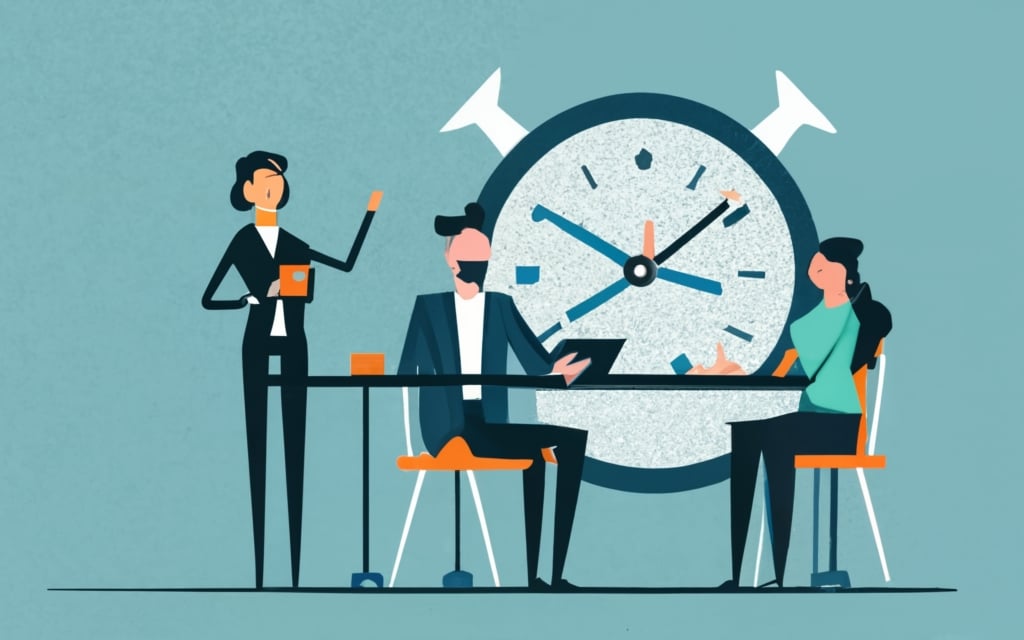Buffer Time: The Scheduling Hack to Boost Productivity

In today's fast-paced world, managing time effectively is crucial to maximizing productivity. One powerful technique that can make a significant difference is incorporating buffer time into your calendar event scheduling. Buffer time refers to the intentional allocation of extra time before and after scheduled events to give yourself room to breathe, refocus, and handle unexpected situations. In this article, we will explore what buffer time is, the benefits of incorporating it, strategies for implementation, case studies demonstrating its effectiveness, and tips for optimizing buffer time for maximum productivity.
- What is Buffer Time?
- Benefits of Incorporating Buffer Time
- Strategies for Implementing Buffer Time
- Examples: Buffer Time in Action
- Tips for Optimizing Buffer Time
What is Buffer Time?
Buffer time is a dedicated period of time that is deliberately left empty before or after a scheduled event. It acts as a cushion, providing a necessary breather between appointments or tasks. While traditional scheduling often involves back-to-back meetings or tasks without any breaks built-in, buffer time recognizes the importance of giving yourself space to regroup, prepare, or simply catch up if needed.
Benefits of Buffer Time

Reduced Stress and Increased Focus
By incorporating buffer time into your calendar, you allow yourself the opportunity to decompress and mentally transition between tasks. This reduces stress and helps you maintain focus during each event. Buffer time enables you to be fully present and better prepared for what lies ahead.
Increased Efficiency and Productivity
Buffer time allows you to handle unexpected interruptions, complete lingering tasks, or review necessary information before your next appointment. This strategic allocation of time ultimately improves efficiency and enhances overall productivity.
Enhanced Mental and Physical Well-being
By scheduling buffer time, you create space for self-care and rejuvenation. Taking short breaks or engaging in relaxation techniques during buffer time can boost your mental and physical well-being, leading to improved performance and a healthier work-life balance.
Strategies for Implementing Buffer Time
Set Realistic Time Estimates
When scheduling appointments or tasks, make sure to account for realistic time estimates that include buffer time. Avoid overloading your calendar by allowing sufficient gaps between activities. This practice creates a more realistic and achievable schedule.
Communicate Buffer Time with Others
Inform colleagues and clients about your buffer time strategy to manage their expectations. By explaining the purpose and benefits of buffer time, you can obtain their support and understanding. This ensures a smoother workflow and reduces the likelihood of interruptions during this protected time.
Prioritize Buffer Time as Non-Negotiable
Treat buffer time as a non-negotiable appointment with yourself. Avoid scheduling over it or allowing others to encroach upon this valuable time. Protecting your buffer time allows you to fully reap its benefits without compromise.
Plan Buffer Time Flexibly
Keep your buffer time flexible, allowing you to adapt to unexpected circumstances. A fixed schedule may not always align with reality, so have the flexibility to adjust buffer time as needed to accommodate unforeseen situations or urgent tasks.
Allocate the right amount of buffer time
Determining the ideal amount of buffer time to allocate in your schedule can vary based on your personal work habits, the nature of your tasks, and your desired level of flexibility. However, allocating at least 15-30 minutes between appointments/tasks is typically considered as a good rule of thumb. This should provide enough cushion for unforeseen delays or unexpected interruptions. The best way to nail it down is to experiment with a few buffer time options and see what works best for you. Don’t forget to then adjust your schedule accordingly with a goal of maximizing productivity.
Use a scheduling app
Using a scheduling app can help you automatically add buffer time in between meetings. Many free scheduling apps now support buffer time as a standard feature. You can choose to add buffer time before or after each meeting, and you can customize the duration of your buffer time. This is one of the the most effective options for implementing buffer time into your schedule.
Examples: Buffer Time in Action
Example 1: Jane's Calm and Productive Days
Jane, a busy project manager, started incorporating buffer time into her daily calendar. By allowing 15 minutes of buffer time before and after meetings, she experienced reduced stress levels and increased productivity. Her buffer time provided the space she needed to collect her thoughts, review meeting materials, and wrap up outstanding tasks. As a result, Jane felt more in control of her schedule and was able to participate in meetings fully engaged and prepared.
Example 2: Mark's Buffer Time for Unexpected Emergencies
Mark, a software engineer, experienced several instances where he had to address urgent technical issues during the workday. To mitigate these interruptions, Mark implemented buffer time in his schedule. He allocated two 30-minute buffer slots each day, allowing him to address unexpected emergencies without compromising his other commitments. This strategy kept him focused and reduced the impact of unexpected issues on his productivity.
Tips for Optimizing Buffer Time

- Use buffer time mindfully: Avoid filling buffer time with non-essential activities. Focus on activities that support your well-being, such as taking short walks, practicing deep breathing exercises, or reviewing your to-do list.
- Review and reflect: Utilize buffer time to review and reflect on completed tasks and meetings. This practice helps you identify areas for improvement, celebrate successes, and plan ahead for future commitments effectively.
- Experiment and adapt: Assess the effectiveness of your buffer time strategy and adapt it to suit your evolving needs. Experiment with different durations and placements of buffer time to find what works best for your workflow.
- Avoid multitasking: Buffer time is an opportunity to recharge and regroup, so resist the temptation to squeeze in additional tasks during this period. Engage in focused, single-task activities to make the most of your buffer time.
Incorporating buffer time into your calendar event scheduling can revolutionize the way you approach your daily tasks. By providing essential breathing space, buffer time allows you to reduce stress, increase focus, and enhance overall productivity. Experiment with this powerful technique and discover the benefits it brings to your work and personal life.
zcal is a great option if you're searching for a scheduling app that allows you to automatically add buffer time in between meetings. zcal is a fast, free, and online meeting scheduling platform that offers customizable meeting options and connects seamlessly with your calendars. To discover how it can transform the way you organize meetings, sign up for free.